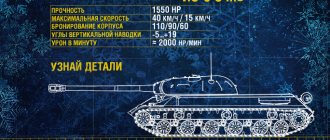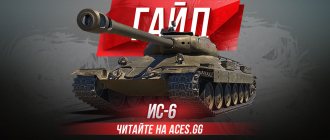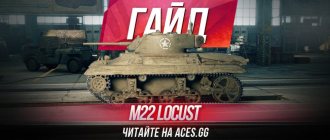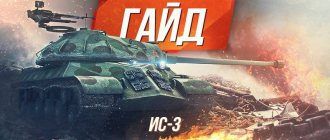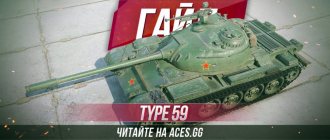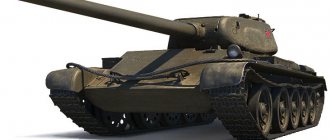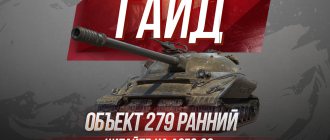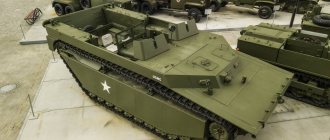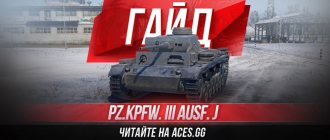Hello to all fans of tank battles and welcome to aces.gg! Tankers, today in the guide we will talk about a vehicle with a difficult fate from representatives of the “sand” technology, the Soviet medium tank of the third level - this is the T-29
.
The T-29 was tested quite a long time ago, in April, and at first this tank was supposed to be a gift for the birthday of tanks in 2022, when the release of World of Tanks turned 7 years old. But the developers did not give this tank as a gift, citing the fact that the players do not like the sand technology and they are selling it. This is where he raised the vine among the community. As a result, thanks to the vine or some other reason, we received this tank as part of the “New Year's Offensive 2018” in WoT.
TTX T-29
As we see in front of us is a real medium tank with very good mobility and dynamics, good visibility and damage per minute. That's all, the armor penetration of the gun is not encouraging, but nevertheless it will be enough in most cases, and KS is also used as premium shells here. There is simply no booking at these levels. In addition, in terms of dimensions, our premium tank is far from the smallest. In addition, our gun has a simply disgusting spread of 0.55, which will make it very difficult for us to play sniper.
The visibility, of course, is not top-end at these levels, but 300 meters of basic visibility can be improved quite well with the help of equipment and perks, because do not forget that this tank has 2 radio operators in its crew.
T-29 gun
T-29 armor
Crew training
The crew of the vehicle consists of five tankers, with no combined specializations, so everyone plays their role. Taking into account the characteristics of the tank, we present a set of perks for Churchill III:
Let's look at the importance of perks and the order of learning. We study repairs for a heavy tank first of all, so that standing on the skating rink, artillery or enemies cannot quickly destroy the vehicle
We study repairs for a heavy tank first of all, so that standing on the rink, artillery or enemies cannot quickly destroy the vehicle.
Before learning this skill, it makes sense to install a “Tool Box” from the equipment.
Combat Brotherhood increases the characteristics of the tank, but only works if all crew members have 100% ownership. Therefore, it is first better to study the perks shown at level 3 (almost all of them work from the moment you study them), and then reset the skills and replace them with BoBr.
When the radio operator and commander master radio interception of 10.5 m and eagle eye of 7 m, the vehicle will receive a total increase in visibility of 17.5 m.
The repeater will increase the communication range by 57 m.
Non-contact ammunition storage is a necessary perk, taking into account the location of the ammunition in the side area. The sniper is perfect for a rapid-fire weapon and the likelihood of inflicting critical damage on enemy modules will increase significantly.
When the tank has less than 70 hit points left, a loader with the Desperate perk will increase the reload speed by 9.1%.
The off-road king will help you gain speed faster on medium and soft soils.
Equipment for T-29
The choice of additional modules in our case is also a huge plus. So, as you already understand, the choice will be pleasant, but everything needs to be done correctly, that is, equipment for the T-29 tank
We put the following: 1. – it is impossible not to take advantage of such a unique chance and make an existing good CSA even more powerful and dangerous. 2. – as you already know, all the guns available to us have problems with alignment, so we need to improve this parameter by speeding up the alignment process. 3. is a worthy solution that will allow you to squeeze all the juice out of the tank, because we get several important increases to the parameters at once.
However, I want to remind you that this tank has very bad visibility and if you don’t want to remain blind, can’t rely on allies and want to have a good viewing range, it makes sense to replace the last point with .
Finally, let’s go over the pros/cons of the T29 tank.
Pros:
- Every explosion from the tower is a terrorist attack. We tank the nines lightly (if we don’t trade the hatch, which is not difficult in general).
- A good gun with the ability to install a stabilizer. 198 mm at BB.
- Plays great at the bottom of the list.
Minuses:
- Low dpm ~2100
- Poor dynamics, maneuverability. The maximum speed back is only 12. The soil resistance is clearly depressing - we drive into the water like we’re going to a funeral.
- Our hull is still leaky t29 penetration zone, unlike the turret. And not to set him up at all is another quest. And all because the T29 is a long, bitch, limousine. Throwing Art into the MTO cover periodically is very painful.
- Far from a record strength of 1250. (Tiger1 at the same level has 1500)
- At the top of the list it plays rather sadly. We stupidly don’t have time to shoot properly. Fighting with 5 is the worst option for the balancer. Previously, until platoons were redesigned, the T29 was great to play in a platoon with benefits, for example FCM 50 t VIII .
Tactics for playing the T-29
As you can see, our tank does not have a specific specialization for one reason or another. To shine well, we don’t have the best visibility at the level, and the dimensions of the tank are not the smallest, but nevertheless we can do it, and sometimes even quite well. We won’t be able to sniper on this premium tank due to the poor armor penetration and disgusting spread. What can we do? — play the role of a support tank on the front line, thanks to good dynamics we will be able to support strike vehicles, our team, and, if necessary, break into the enemy’s ranks.
Bottom line
As you can see, there is a lot to say about this tank and there is nothing that will appeal to it except collectors, due to its interesting appearance. The tank will also appeal to fans of sand gameplay: tolerable armor penetration, good mobility, good visibility and acceptable DPM will allow such players to have fun. The rest will sell this tank for a slot and 1000 credits.
KV-122 armor
Booking indicators can be designated as “controversial.” Here the tower is the strongest part. It has a very convenient shape, which allows you to catch ricochets of the seventh and eighth levels.
Turret armor – 100/90/90 mm. Hull armor – 75/60/60 mm. The case, as we see, is less protected. Comparing with classmates, we see that such a reservation is not enough for the seventh level.
A right angle ensures easy penetration of this tank, but if you turn it with a diamond, the problem of penetration will be partially solved.
By the way, the KV-122 does not have preferential status, so it will be thrown into battles with Tier 9 vehicles. Such vehicles will be able to penetrate even the forehead of the turret, so this tank is too weak for the “nines”, here you will have to creatively approach combat tactics.
The term "armored car"
In principle, the difference between an armored car and a wheeled armored personnel carrier lies in the purpose of the vehicle. An armored transporter is designed to transport (transport) riflemen (motorized infantry) to the battlefield or to a battlefield where enemy shelling of the vehicle is possible, while an armored vehicle is used to detect and destroy the enemy with fire from on-board weapons. There are specialized armored vehicles that do not have a troop compartment, which are not armored personnel carriers, and armored personnel carriers that do not have integral on-board weapons, which cannot be called armored vehicles. However, modern armored vehicles are often variants of wheeled armored personnel carriers, and therefore they do not lend themselves to clear classification.
As part of the mechanization of the armed forces in the USSR, the BTR-40 was produced - a similar American “reconnaissance vehicle” “M3 Scout car”, which was supplied to the USSR under the Lend-Lease program and was a universal wheeled vehicle without a turret. Subsequently, further development of the concept of a two-axle all-wheel drive armored vehicle led to the emergence of specialized floating “armored reconnaissance and patrol vehicles” BRDM-1 and BRDM-2, which are similar in layout to Soviet machine-gun armored vehicles of the thirties. Also, self-propelled howitzers on the eight-wheeled base of armored personnel carriers (2S23 Nona-SVK) have a certain similarity with armored vehicles of the thirties. The term "armored car" ( BA
) as part of the name in the USSR was last used in relation to the two-seat BA-64.
In relation to modern wheeled armored vehicles, the terms BKM
, that is, “wheeled combat vehicle” or
KBBM
- “wheeled armored combat vehicle”.
Other names are also used: for example, in the United States, the Cadillac Commando multi-purpose armored vehicle is called an infantry fighting vehicle or armored personnel carrier, since the vehicle has a troop compartment for two people. The Fox is a British light armored reconnaissance vehicle from the 1970s, designated Combat Vehicle Reconnaissance (Wheeled) or CVR(W).
. (In the armed forces of states in the territory of the former USSR, specially designed wheeled infantry fighting vehicles are traditionally called BRDM). In relation, for example, to an “ersatz armored vehicle” based on an army all-terrain vehicle “Humvee”, the expression “up-armored HMMWV” is used, that is, “additionally armored Humvee”. Armored all-terrain vehicles are also used in Iraq for political reasons - the use of heavy armored vehicles is evidence of an escalation of hostilities, which causes a decline in enthusiasm for the continuation of hostilities among the American taxpayer. Unarmored Humvees suffered significant losses in Somalia in 1993, and since then these vehicles have been reinforced with armor, half-turrets and used in infantry support. In relation to wheeled armored personnel carriers used as reconnaissance and patrol (in Soviet terminology) vehicles (for example, “ATF Dingo”) the expression “Infantry Mobility vehicle” is used - that is, “mobile infantry vehicle.” Such vehicles often have high ground clearance and a wedge-shaped bottom, which significantly improves the protection of the crew and troops from the consequences of hitting a mine (one of the exceptions is the German ATF Dingo armored car, where the flat bottom is protected by composite armor).
Historical reference
Main article
:
History of the T-62A
Development of a new medium tank began in 1957. The new tank was supposed to be a response to the creation by France and Germany of a new single medium tank to arm the armies of NATO countries. OKB-520 began work on modernizing the T-55 medium tank. In 1958, three prototypes were built. In the period from 1959 to 1961, prototypes were tested. In parallel with the basic version, a version was manufactured and tested with the installation of a 115-mm U-5TS (2A20) smoothbore gun, which received the GBTU index “Object 166”. At the end of the tests on August 12, 1961, by decree of the Central Committee of the CPSU and the Council of Ministers of the USSR No. 729-305, both versions of the tank were accepted for service. By order of the USSR Minister of Defense on January 9, 1962, “Object 165” was adopted under the designation T-62A. Design features: gun stabilization system in two planes, rubber-metal track joints, torsion bar suspension of rollers.
History
Review of the Tier 10 Soviet heavy tank Is-7
An order for the T29 tank was approved on 12 April 1945, but the numbers were reduced to 1152. Also in April, four additional prototype T29s were authorized, but later, it was directed that one of these was to be armed with the 120mm gun T53 and redesigned as the heavy tank T34. This was only one of the many changes to the program with the approaching end of hostilities. After the end of the war in the Pacific, the production contract with the Pressed Steel Car Company, Inc. was terminated with one T29 completed and a second partially finished. All material was transferred to Detroit Arsenal for the completion of ten prototypes for postwar development studies authorized on August 23, 1945. Later, the total of T29 prototypes was reduced to eight.
